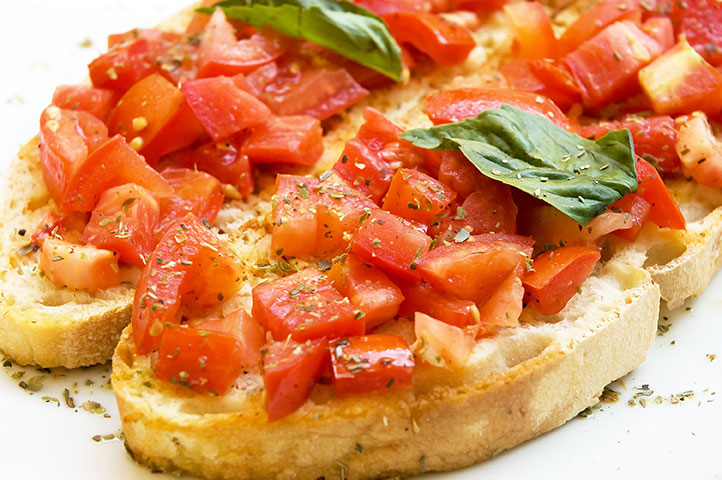
The secret of Tuscan cuisine: the simplicity
Tuscan cuisine is a poor cuisine that comes from peasant culture: few ingredients, but of great quality, simple cooking, little elaborate dishes.
For this reason, it is a very modern kitchen because it is healthy and environmentally sustainable, in fact, the great classics often provide for the reuse of leftovers or 'laid' bread, the absolute protagonist of Ribollita, Panzanella, Pappa al Pomodoro, and Bruschetta.
What are the ingredients that make up this magic?
Raw materials...
In first place extra virgin olive oil, vegetables including tomato and bread.
So what's the secret? The great quality of the ingredients certainly and the care not to ruin them. These same ingredients are at the base of the term Mediterranean Diet coined by the American physiologist Ancel Keys, synonymous now by eating well and in a healthy way and for this recognized by UNESCO Intangible Cultural Heritage of Humanity.
The bread produced in Florence has a characteristic: it is foolish, that is, free of salt. It is said that the custom dates back to around 1100 when Pisa blocked salt supplies in the port of Pisa to induce Florence to surrender. The Florentines did not give up but began to make bread without salt, other versions say that the Florentines produced silly bread, to save money from salt, in any case, an illustrious witness documents this habit: Dante in Canto XVII of Paradise writes referring to exile: "Thou shalt have proof how knows of salt The bread of others ..."
Bread oil and tomato are the triptychs at the base of many recipes, we choose the simplest one from which to start if you want to try a cuisine that speaks Tuscan: bruschetta, queen of appetizers and snacks.
Ingredients:
- Artisan bread
- Fresh tomato
- garlic
- extra virgin olive oil
- salt
- pepper
- fresh basil
Wash and cut the tomato into pieces, the season in a bowl with salt, pepper, oil, and basil.
Cut the slices thick enough and then toast them for a couple of minutes until they become crunchy outside and soft inside. Season the bread by rubbing on a clove of garlic (optional for those who do not like the pungent taste of this product).
Pour the seasoned tomato and finish with a little olive oil.
It is recommended to eat immediately so that the bread maintains its crunchiness and to appreciate the contrast between warm bread and fresh seasoning. There is still a simpler version that is limited to seasoning the toasted bread and " garlic " only with oil and salt, ideal for starting lunch with friends or for a mid-day snack.
Share on:


